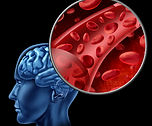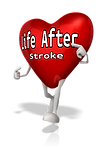St Mary's Hospital Stroke Rehabilitation Unit
Phoenix Park, Dublin, Ireland


Introducing the Occupational Therapy Team
Occupational Therapy helps people following a stroke to do the everyday things that they want to do and need to do (AOTI).
There are two Occupational Therapists and one Therapy Assistant providing rehabilitation in the stroke unit. Here in St. Mary’s Hospital we provide stroke rehabilitation to patients who have been referred from the acute hospital.
Stroke patients may often experience changes in their physical, cognitive and functional abilities that impact on their ability to perform their daily activities. Here in Occupational Therapy, we work with patients to improve their ability to engage in meaningful activities following their stroke event.
The Occupational Therapist provides assessment and treatment in several different areas including personal and domestic activities of daily living, cognitive rehabilitation, group therapy, community living skills, upper limb retraining and home assessments and recommendations which are discussed below.
We provide a weekly Occupational Therapy programme consisting of a mixture of individual and group sessions depending on each patient’s needs. We encourage patients to participate in goal setting to ensure their occupational therapy programme is meaningful to them.
The Occupational Therapist provides support and expertise in goal setting and regularly reviews and amends as progress takes place.
Weekly team meetings occur to discuss patient progress and family involvement is also encouraged.
You can also listen to this introduction - click on the play button below


Aoife NiRiain
Occupational Therapist
Eilish Hogge
Senior Occupational Therapist

Orthopaedic chair



This perching stool is height adjustable



To help you raise yourself from the bed


Community Living Skills
Community living skills are addressed within Occupational Therapy depending on patient needs. These include shopping and money management skills. These aim at maximising patient’s independence on discharge in the community.

Groups
The Occupational Therapy department facilitates several rehabilitation groups all aimed at improving the patient’s function. Weekly groups may include breakfast club, falls education group, gardening, upper limb and life skills group. These groups can be adapted depending on patient need.

Helping in the Gardening Group

The Breakfast Club
Upper Limb
Some patients experience paralysis or weakness in their arm post stroke. Areas that may be affected include movement, strength, co-ordination, grip, sensation and swelling. Occupational Therapists work with the arm to assess and provide intervention to improve the functional use of the arm where possible. Where appropriate the Occupational Therapist will provide patients with an upper limb programme suitable for their needs and grade this throughout sessions to promote continues improvement. Patients may require compensatory strategies or splinting for the affected limb depending on the severity of their stroke.
Equipment
Often certain pieces of equipment can make life easier on discharge home.
The Occupational Therapist can recommend equipment that promotes independence in the home environment and assist when completing functional tasks.
Below are photographs of some of the equipment we use to help make your life easier.
Home Visit
The Occupational Therapist may complete a home visit with you during your admission. This is part of the discharge planning process for the patient. During this, the Occupational Therapist evaluates the home environment to assess a patient’s functional status at home, provides recommendations and suggests equipment that may be needed for discharge.
Cognition is the brain’s ability to function and understand through thought, experience and senses. It manages processes including attention, memory, planning, problem solving, judgement, decision making and reasoning. Occupational Therapists assess these areas and provide intervention through a graded programme based on the difficulties patient’s experience. Patients may experience inattention or neglect to one side of their body or environment post stroke which the Occupational Therapist will address in therapy also.
Cognition
Activities of daily living include personal care, toileting, transfers and kitchen tasks. Occupational Therapists work with patients in achieving goals in these areas through the relearning, potential modification and practice of these activities. New methods for completing the tasks may be introduced, sometimes grading and adapting the task as the patient progresses in their rehabilitation. The importance of engagement in leisure activities is often included in the occupational therapy rehabilitation program in order to promote a patient’s quality of life after stroke.
Activities of Daily Living


Ann makes herself a cup of tea
Eilish talks to Liam about the value of writing important information in a notebook

Ann practices opening and closing different locks and turning light switches on and off
